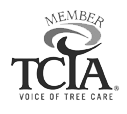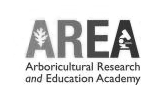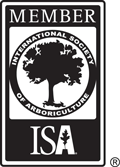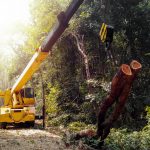Denver, Colorado is an amazing place for people who love outdoor activities, abundant food choices and great live music. That being said, anyone who has spent any time in the state knows how crazy and unpredictable the weather can be. On top of frequent weather changes, Denver is also considered an arid grassland which provides a very harsh climate for trees. When it comes to tree care on your property, there are a few major challenges homeowners need to be aware of and some easy ways to improve your tree’s longevity through seasonal tree trimming.
Trees need water to grow and one of the biggest challenges in Colorado is the lack of available ground water for trees to pick up. During hot summer months, water evaporates from the ground and transpires (releases) from tree leaves at a very high rate. This means that during hot days, more frequent watering throughout the cooler parts of the day is most favorable. During winter, the irrigation systems are shut off, so they don’t freeze and break. Therefore, winter watering is probably the biggest concern and should be part of your trees seasonal winter routine. Insufficient watering can lead to large parts of the tree dying back if not the whole tree. Trees with large deadwood can become hazardous and aesthetically unpleasing which are two great reasons to get your trees trimmed.
Fluctuating temperatures is another problem in Denver. Trees can become stressed when temperatures range from 30 to 80 degrees Fahrenheit in a single day. Also, it is very common to experience a late freeze in spring while the trees are bearing leaves. This can freeze the buds, juvenile leaves and flowers, causing major dieback or decreased fruit production. One thing to note is that a lot of wildlife, such as squirrels and birds, feed on fruit. If the blooms are frozen and no fruit is made for the year, squirrels revert to eating bark off of the trees. Squirrel damage can be extremely devastating to trees and cause significant branch dieback. If squirrels cause damage to major limbs, tree trimming will help the tree conserve energy and grow back.
Trees that are not taken care of through regular trimming become dense and heavy. Their branches begin to grow in a downward facing direction which makes them more susceptible to breakage. Also, the structure of the tree can become weakened without regular care. There could be a lot of unnecessary limbs throughout the canopy not receiving enough sunlight. This causes them to die back creating more weight and pressure on healthy limbs. Heavy trees that bear leaves during early or late snow storms are very prone to breakage. Through trimming trees throughout the year and thinning out declining branches, you will give your trees the best chance of survival in Denver’s harsh environment.











